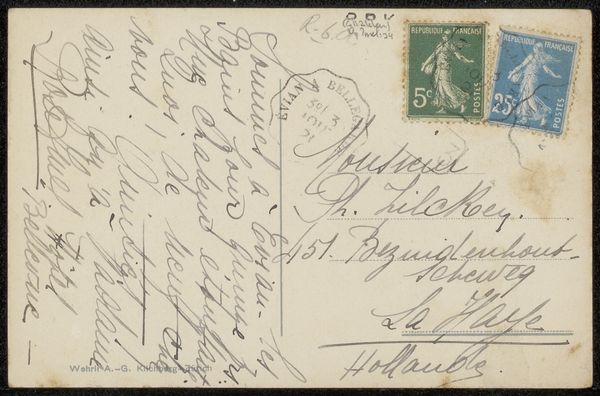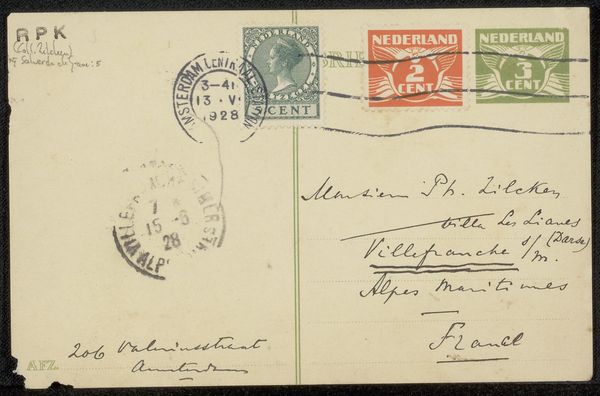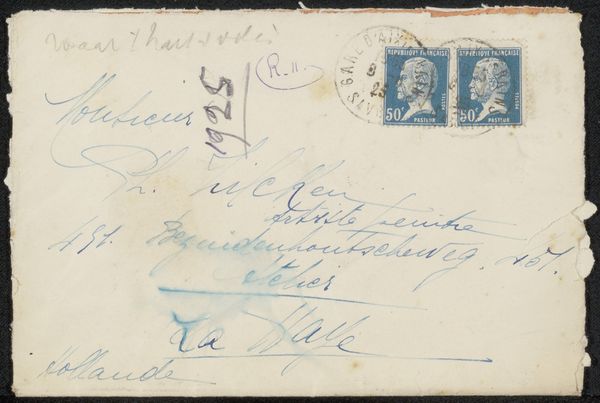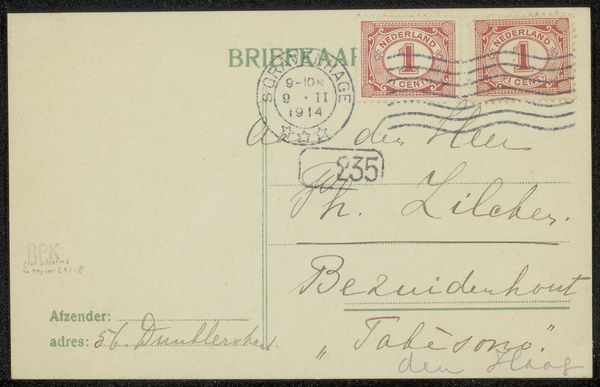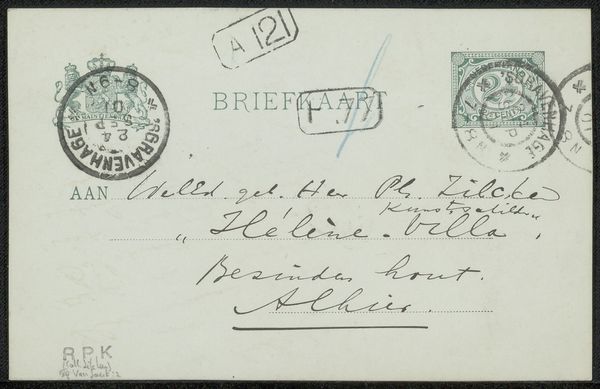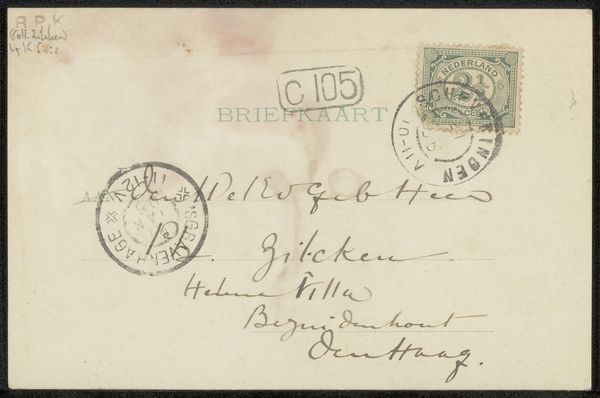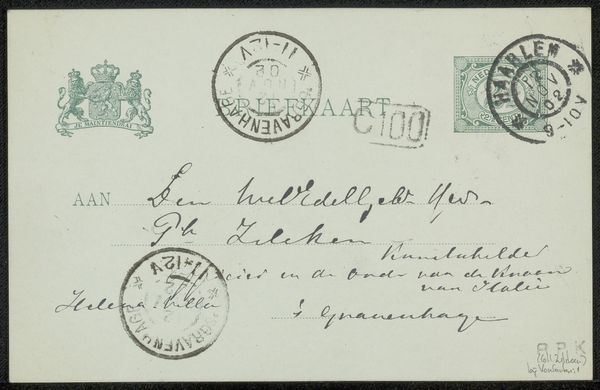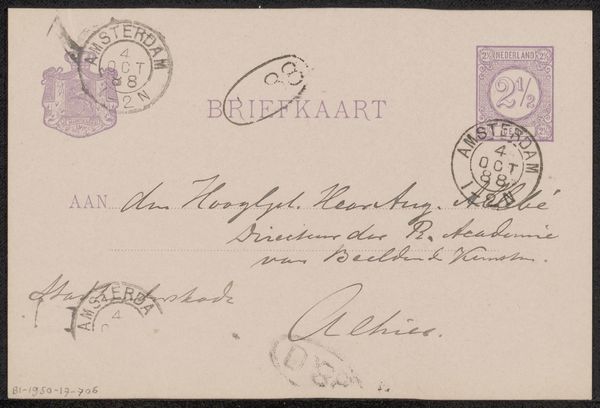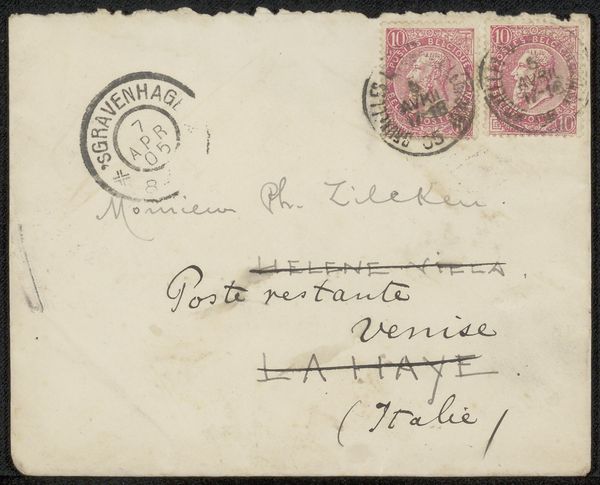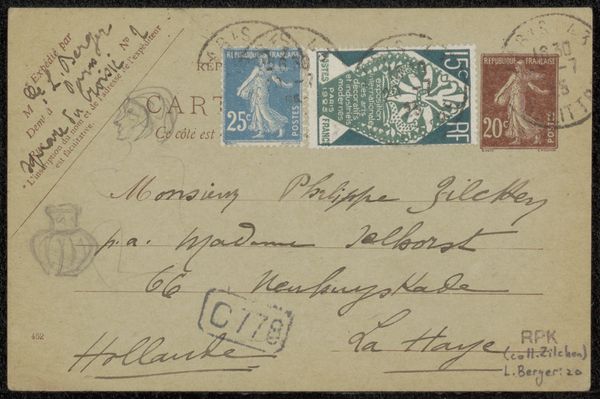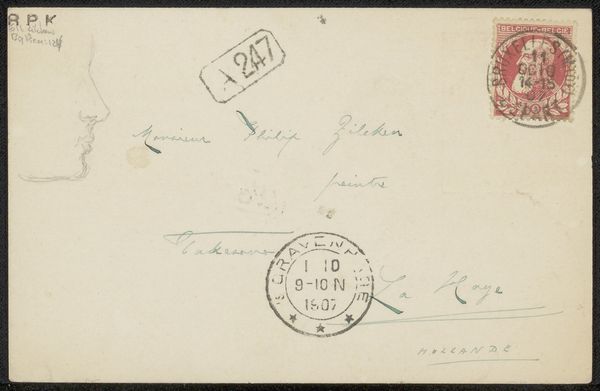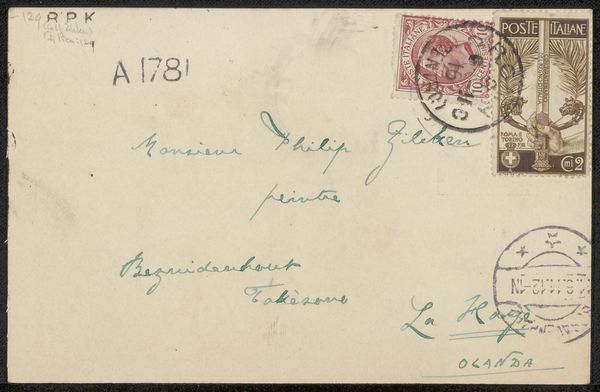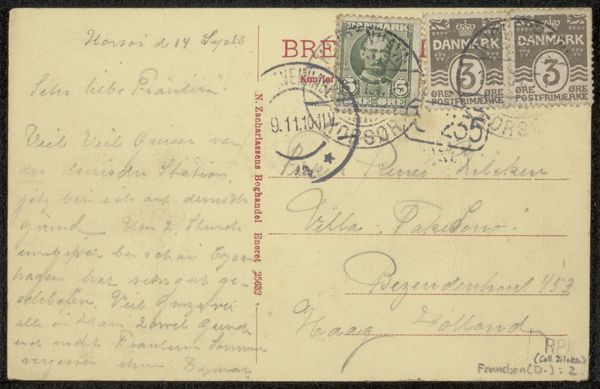
drawing, print, paper, ink
#
drawing
# print
#
paper
#
ink
Copyright: Rijks Museum: Open Domain
Curator: This is "Prentbriefkaart aan Philip Zilcken," a printed postcard presumably sent before 1918. It combines drawing, print, and ink on paper. Editor: My first thought? Ephemeral communication, really fragile. It's a tiny piece, whispering stories across time with a fading script, traces of a lost exchange and intimate thoughts of the author.. Curator: It speaks to the accessibility of art during that period. Mass-produced postcards circulated widely, effectively democratizing image consumption and communication, especially via the postal service, an important and evolving means of delivering letters during World War One.. The handwritten message transforms the industrial print into something unique. Editor: Right, but consider the visual language too. Even the stamps are deliberate choices in a subtle performance. Red ink, repeated iconography--what cultural narratives do they activate? What’s suggested by these icons? And why were two required? The use of written language versus formal portraits would have different meanings in an industrializing era. Curator: True, the act of physically writing the message is vital. A handwritten text speaks to manual processes counter to those involved in mass-producing the base of the postcard. And those postage stamps remind me how tangible communications really were. Editor: But I still return to these two seemingly identical postage stamps, affixed in repetition, and I wonder whether their function has any symbolic or psychological implications—doubled price, duplicated message, mirror and shadow—revealing something otherwise hidden about its meaning. Curator: Interesting reflection on how the postal system helped bind people together. Examining how artists utilized readily available industrial techniques really makes the material turn potent, and highlights communication means when mailing systems began modernizing and changing social habits, even as warfare enveloped society. Editor: Precisely. It prompts us to consider material not only as something visible but imbued with a wider cultural narrative and layered emotional weight from a sender long ago.
Comments
No comments
Be the first to comment and join the conversation on the ultimate creative platform.

